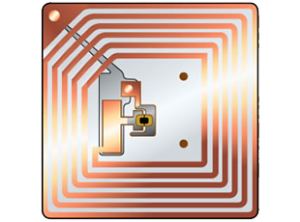RFID – Radio-frequency identification
 Radio frequency identification (RFID) is a generic term that is used to describe a system that transmits the identity (in the form of a unique serial number) of an object or person wirelessly, using radio waves. It’s grouped under the broad category of automatic identification technologies.
Radio frequency identification (RFID) is a generic term that is used to describe a system that transmits the identity (in the form of a unique serial number) of an object or person wirelessly, using radio waves. It’s grouped under the broad category of automatic identification technologies.
Radio-frequency identification (RFID) is a wireless non-contact system that uses radio-frequency electromagnetic fields to transfer data from a tag attached to an object, for the purposes of automatic identification and tracking. Some tags require no battery and are powered and read at short ranges via magnetic fields (electromagnetic induction). Others use a local power source and emit radio waves (electromagnetic radiation at radio frequencies). The tag contains electronically stored information which may be read from up to several meters away. Unlike a bar code, the tag does not need to be within line of sight of the reader and may be embedded in the tracked object.
Auto-ID technologies include bar codes, optical character readers and some biometric technologies, such as retinal scans. The auto-ID technologies have been used to reduce the amount of time and labor needed to input data manually and to improve data accuracy.
RFID tags are used in many industries. An RFID tag attached to an automobile during production can be used to track its progress through the assembly line. Pharmaceuticals can be tracked through warehouses. Livestock and pets may have tags injected, allowing positive identification of the animal.
Some auto-ID technologies, such as bar code systems, often require a person to manually scan a label or tag to capture the data. RFID is designed to enable readers to capture data on tags and transmit it to a computer system—without needing a person to be involved.
Since RFID tags can be attached to clothing, possessions, or even implanted within people, the possibility of reading personally-linked information without consent has raised privacy concerns.


